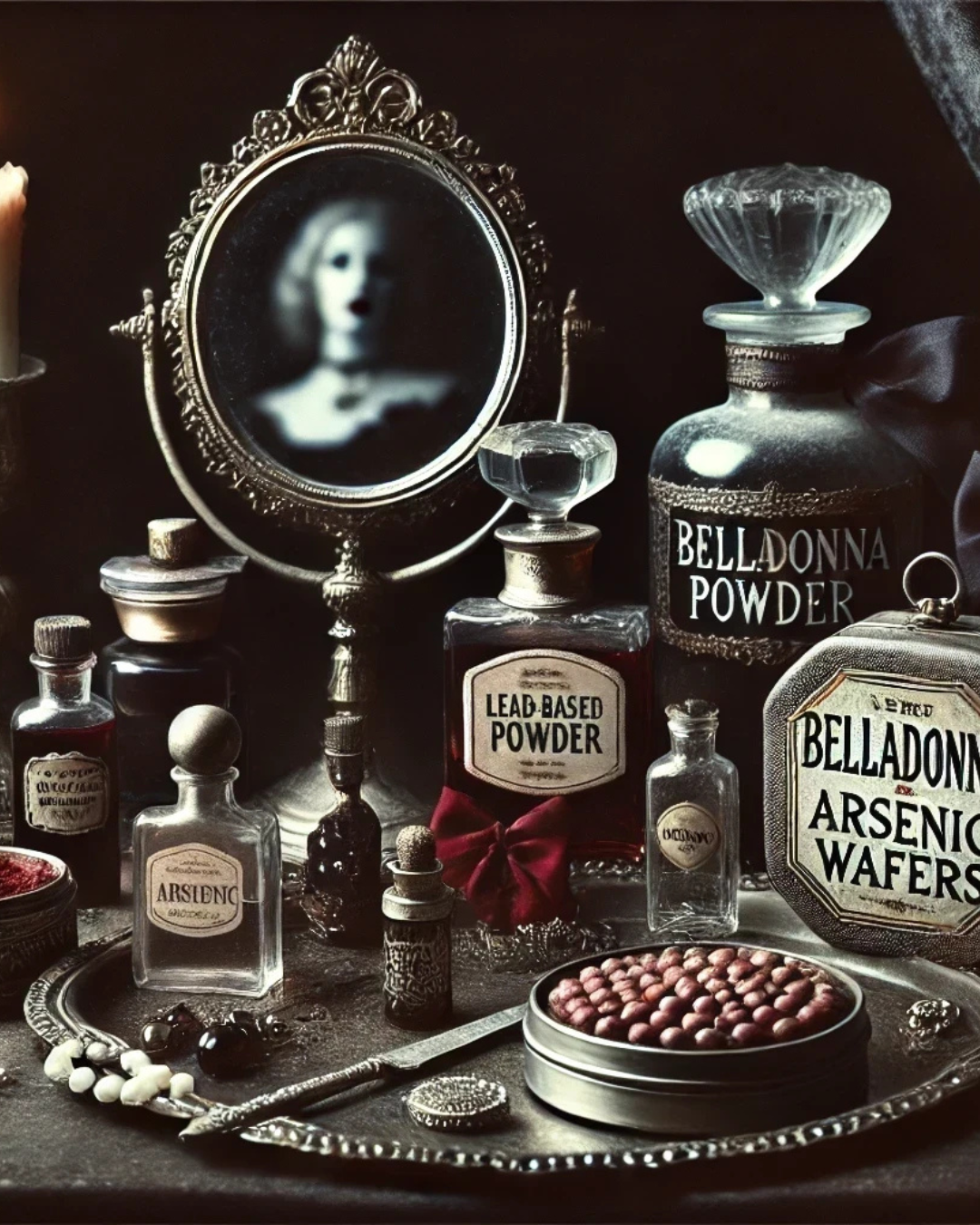
Poison as Beauty: The Deadly History of Cosmetics
Beauty has always been a weapon of intrigue, a tool of transformation, and, sometimes, a harbinger of danger. In history’s pursuit of the perfect complexion, captivating eyes, and irresistible lips, the cost wasn’t just in currency—it was paid in health, sanity, and sometimes even life. Welcome to the darker side of glamour, where allure came laced with poison.
The Pale Face of Peril
In the 16th and 17th centuries, pale skin wasn’t just fashionable—it was a status symbol. The wealthy used ceruse, a blend of white lead and vinegar, to achieve that ghostly, flawless complexion. Its effect was undeniable: imperfections vanished under its toxic sheen, leaving wearers with a hauntingly perfect canvas. But beauty had its price. Over time, the lead ate away at the skin, caused irreversible damage, and seeped into the bloodstream, slowly poisoning its devotees. Ironically, the damage often demanded more ceruse to conceal it, trapping women in a fatal cycle.
Deadly Drops: Belladonna’s Fatal Allure
During the Renaissance, Italian women sought to capture an ethereal, wide-eyed beauty. Belladonna, meaning “beautiful lady,” became the secret weapon of choice. A few drops of the plant’s toxic extract in each eye would dilate the pupils, creating a dreamy, otherworldly gaze. The cost? Blurred vision, headaches, and, with prolonged use, blindness. The soft, doe-eyed look may have whispered elegance, but the danger behind the drop was anything but delicate.
Arsenic Wafers: Glow at Your Own Risk
By the 19th century, arsenic wasn’t just the stuff of murder mysteries—it was a beauty treatment. Women ingested arsenic wafers, marketed as complexion enhancers, to achieve a luminous, almost supernatural glow. These tiny, toxic bites were said to clear blemishes and smooth wrinkles from within. The truth? Arsenic poisoned the blood, leading to nausea, organ failure, and hair loss—not to mention the occasional untimely demise. Still, the wafer’s promise of radiance kept its devotees coming back for more.
The Lead-Lined Lips of Love
Long before lipstick became a beauty bag staple, it carried a darker charm. Ancient Egyptian women crushed red ochre and mixed it with lead-based dyes to stain their lips in rich, dramatic hues. This wasn’t just vanity—red lips were a powerful symbol of status, seduction, and strength. Cleopatra herself is said to have worn a crimson pout that could captivate rulers and armies alike. But the same lead that added intensity to her look also poisoned the blood, making every kiss potentially lethal.
From Danger to Desire
Beauty has always danced on the edge of danger. The pallid faces, dreamy eyes, and scarlet lips of history weren’t just trends—they were acts of audacity, declarations of power cloaked in mystery. Poison wasn’t merely an ingredient; it was an unspoken part of the allure, a reminder that the pursuit of perfection often walked hand in hand with risk.
Why We’re Still Captivated
There’s an undeniable seduction in beauty that walks the razor’s edge. Perhaps it’s the drama, the defiance, or the sheer audacity to transform oneself, no matter the cost. These tales of toxic allure remind us that beauty has always been more than skin deep. It’s a story of power, rebellion, and transformation—a spell cast with every stroke of pigment, every flick of liner. Poison may no longer lace our powders, but the legacy of daring lives on in every unapologetic statement we make.
Closing the Chapter
The dangerous glamour of history serves as a haunting reminder: beauty has never been passive. It’s power, it’s rebellion, it’s choice. Today, we wear that legacy with every bold lip and every striking gaze, channeling the spirit of those who came before us—audacious, fearless, and unapologetically bold.

